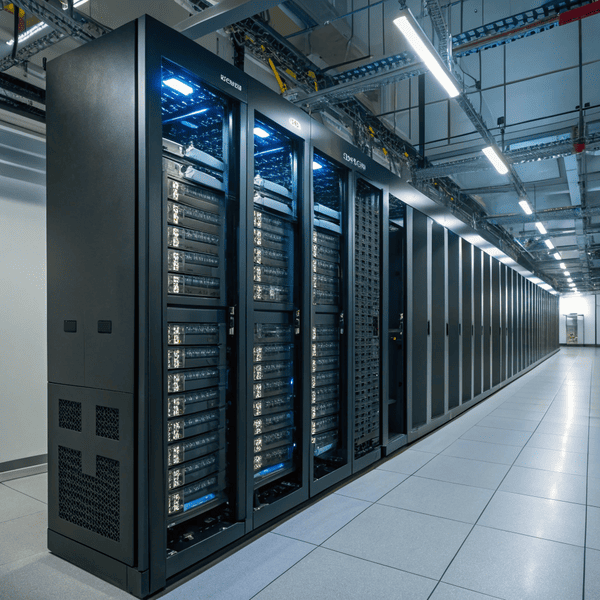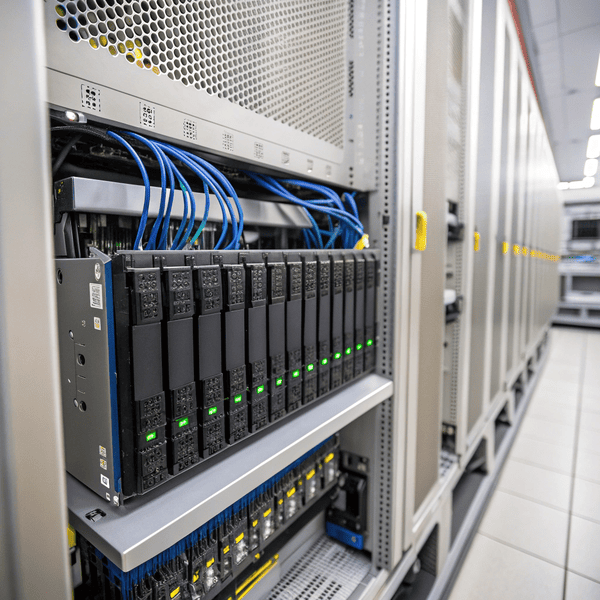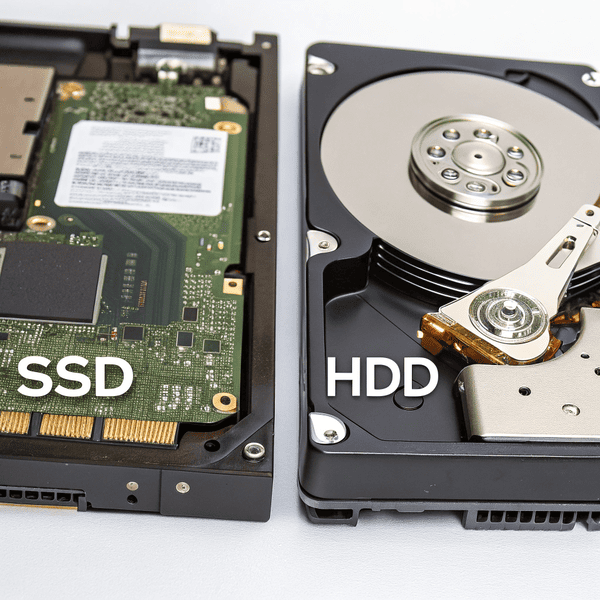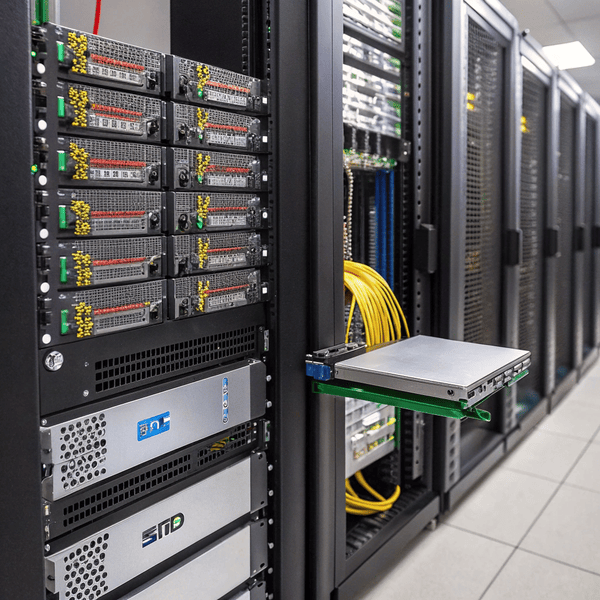Choosing the right enterprise SSD for your servers is critical. High demand workloads and mission-critical applications require durable, secure, and consistent storage designed for the rigors of the data center environment[1][9][11][12][14].
The best enterprise SSD for server use is generally the Samsung PM1743. It offers PCIe 5.0 speeds up to 14,000 MB/s, high endurance (~3504 TBW), and The best enterprise SSD for server use is generally the Samsung PM1743[^1]. It offers PCIe 5.0 speeds up to 14,000 MB/s, high endurance (~3504 TBW), and Power Loss Protection (PLP)
[^1]: Explore this link to understand why the Samsung PM1743 is a top choice for enterprise SSDs, including its speed and endurance.
. It’s widely recommended for high-performance, reliability, and broad compatibility in modern data centers[1][12].
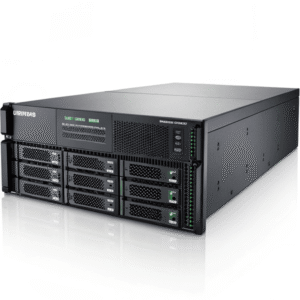
When selecting enterprise SSDs, I always look for features like power loss protection, high endurance, consistent performance, and security. These matter far more than peak speed alone. Cost is always a debate, but in server environments, downtime and data loss can cost much more than the hardware itself[1][11][12]. Below, I’ll break down the specifics for each question.
What is the best enterprise SSD for server?
You’re managing databases, analytics, or virtual machines—all needing reliable high-speed storage. The wrong SSD can mean downtime, failed jobs, or lost data[1][9][11][12].
The Samsung PM1743 is the current best enterprise SSD for servers. It delivers The Samsung PM1743[^1] is the current best enterprise SSD for servers. It delivers PCIe 5.0 speeds up to 14,000 MB/s, high endurance, PLP, and a 5-year warranty
[^1]: Explore this link to understand why the Samsung PM1743 is considered the best enterprise SSD for servers.
up to 14,000 MB/s, high endurance, PLP, and a 5-year warranty. It’s ideal for workloads requiring maximum performance and reliability, such as AI, analytics, and large databases[1][12].

Dive deeper, here’s why the Samsung PM1743 leads:
- Interface: PCIe 5.0 x4, future-ready for new hardware[12].
- Capacities: 1.92 TB up to 15.36 TB, so it suits both dense and high-performance systems[12].
- Read/Write: Up to 13,000 MB/s read and 6,600 MB/s write speeds[12].
- Power Loss Protection: Critical to avoid data loss during outages, mandatory for robust server operations[1][12].
- Endurance: ~3504 TBW means the drive survives intense enterprise usage[1][11][12].
- Security: Hardware-based encryption and firmware protection[11].
- Warranty: 5-year coverage minimizing risk and long-term costs[1][12].
If you need high-capacity cold storage, the Solidigm D5-P5336 with up to 122 TB per drive stands out, but its endurance is lower and lacks PLP, so it's not ideal for transaction-heavy or mission-critical workloads[12]. For balanced performance and reliability, the Ultrastar DC SN655 or Seagate Nytro 5060 are also excellent choices[11][12].
Are SSDs used in data centers?
SSDs are becoming standard equipment in enterprise data centers, replacing HDDs for fast retrieval and high-performance applications[9][10][11][12][14].
Yes, SSDs are widely used in data centers for "hot" data and performance-critical workloads, while HDDs still handle bulk archival or “cold” storage. Yes, SSDs are widely used in data centers for "hot" data and performance-critical workloads, while HDDs still handle bulk archival or “cold” storage. Enterprise SSDs[^1] excel in speed
[^1]: Explore this link to understand how Enterprise SSDs enhance performance and reliability in data centers.
excel in speed, consistency, endurance, and data protection, supporting databases, virtualization, AI, media production, and more[8][9][11][12][14].
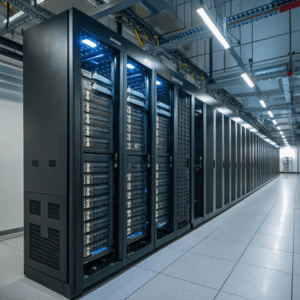
Dive deeper, SSD adoption in data centers addresses specific needs:
- Performance: NVMe enterprise SSDs can deliver millions of IOPS and up to 10,000 MB/s throughput[11][12][14].
- Endurance: Data center SSDs handle high volumes of writes and reads over years, with DWPD ratings up to 65 in specialized drives[12][14].
- Reliability: 24/7 operation, tested for server platforms and RAID compatibility, advanced firmware and hardware protections against power loss and bit errors[9][11][12][14].
- Security: Features like hardware encryption, secure erase, and self-encrypting drives for data compliance[11][12][14].
- Energy Efficiency: Enterprise SSDs run cooler, consume less power, and lower total cost of ownership by minimizing downtime and maintenance[10][12][14].
- Tiered Storage: SSDs serve performance-critical and frequently accessed “hot” data; HDDs provide cheap, dense storage for archives or backups[8][9][10][14].
Industries rely on SSDs for workloads involving AI, cloud infrastructure, OLTP databases, and media streaming. The trend is clear: enterprise SSDs will keep expanding in data centers as their cost drops and capacity rises[8][10][11][12][14].
What are the different types of enterprise SSD?
Enterprise SSDs come in several interfaces, form factors, and underlying technologies, each with trade-offs in speed, capacity, endurance, and compatibility[3][11][12][13][14][15].
The main types of enterprise SSD are SATA, SAS, and NVMe (PCIe), with form factors including 2.5-inch, M.2, U.2, U.3, EDSFF (E1.L/E3.S/E3.L), and add-in cards. Each type is suited for different workloads and server environments[11][12][13][14][15].
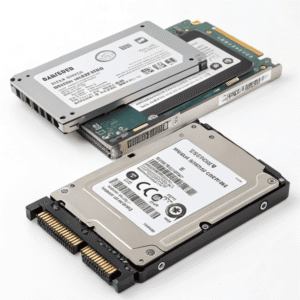
Let’s break them down in more detail:
| Type | Interface | Form Factors | Speed | Endurance | Use Cases | Key Features |
|---|---|---|---|---|---|---|
| SATA | SATA | 2.5", M.2, mSATA | ~550MB/s | High | Legacy servers, archiving | Affordability, compatibility |
| SAS | SAS | 2.5", U.2, U.3 | up to 12Gb/s | High | Transactional workloads, mixed-use | Dual-port, high reliability |
| NVMe | PCIe | M.2, U.2, U.3, EDSFF | up to 14GB/s | Very High | AI, HPC, big data, analytics | Low latency, high IOPS, PLP |
| EDSFF | PCIe | E1.L, E3.S, E3.L | up to 32GB/s | Varies | Hyper scale/cold storage | Hot-swappable, high density |
| Embedded | PCIe/SATA | BGA, eMMC | Lower | Moderate | Edge, IoT, specialized | Compact, rugged |
- NVMe SSDs (PCIe Gen4/5) are the fastest, lowest latency, and best suited to enterprise workloads demanding high IOPS (databases, AI, analytics)[11][12][13][14].
- SATA SSDs are cost-effective for read-intensive or archival needs[3][11][13][14].
- SAS SSDs provide full-duplex, higher durability, and dual-port redundancy for transactional/data integrity workloads[11][12][13].
- U.2/U.3 SSDs allow hot-swap and high scalability in server racks[11][13][14].
- EDSFF drives (E1.L/E3.S/L) are optimized for high-density hyperscale deployments, especially in edge data centers or cloud-scale systems[14].
- Embedded SSDs such as BGA or eMMC are designed for space-constrained industrial or IoT systems but less common in standard servers[13].
Additionally, flash type affects endurance and cost:
- SLC: Most durable, fastest, highest cost—for mission-critical writes[13][14].
- MLC: Good balance for general enterprise, moderate endurance and cost[13][14].
- TLC: Most common, affordable, and reasonable endurance for balanced workloads[12][13][14].
- QLC: High capacity, lowest cost per TB, but limited endurance—best for cold and archival storage[13][14].
Enterprise SSDs differ from consumer SSDs by offering PLP, advanced error correction (ECC), secure erase, encryption, higher endurance (measured in TBW/DWPD), steady QoS, and are validated for 24/7 use in the harshest environments[1][9][11][12][14][15].
Conclusion
Enterprise SSDs are essential in modern servers and data centers. Select models and types based on your mix of performance, endurance, protection, and budget—don’t cut corners where reliability is critical[1][9][11][12][13][14].

